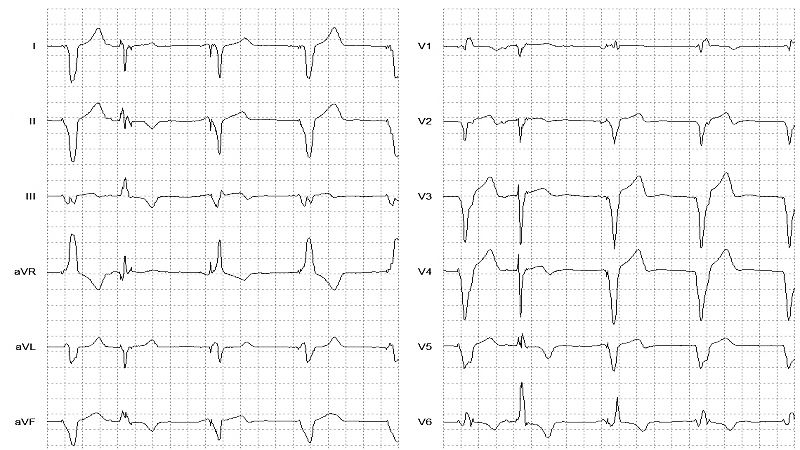| Paced rhythm | C16, C17, C21, C22, C23, C24, R9 | |||
As a basic definition, Pacemaker Rhythm is the propagation of cardiac depolarization by an implanted electrical device; as well as the interaction of such devices with a patient’s native cardiac conduction system. Atrial and/or ventricular pacing can be detected in an ECG as a pacemaker spike occurring before a P-wave (atrial) or before a QRS (ventricular) or both (Dual chamber). A pacemaker lead wire placed in the right ventricle will produce a left bundle branch block pattern on the ECG. A lead wire in the left ventricle will produce a right bundle branch pattern. Dual chamber pacemakers use two leads, with one lead in the right atrium and the other in the right ventricle. Bi-ventricular pacemakers use three leads, one for each ventricle and one for the right atrium; used for cardiac resynchronization therapy to restore synchronous ventricular contractions. Fixed rate (Asychronous) pacing occurs at a pre-determined rate regardless of the patient's heart rate. Demand (Synchronous) pacing occurs only when the patient's heart rate falls below a specific rate. |
||||
| Rhythm Strip | ||||
 Pace Rhythm (60 BPM) | ||||
| 12 Lead EKG | ||||
 |
||||
